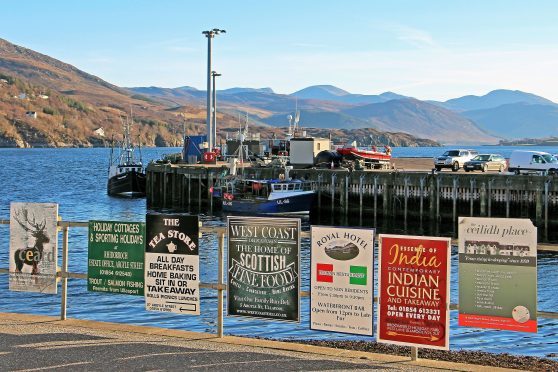Two Highland communities have topped a new list of Scotland’s most entrepreneurial areas.
Ullapool and Newtonmore emerged as leaders in a survey of self-employment levels in nearly 500 towns, cities and suburbs, carried out by the Federation of Small Businesses (FSB) in Scotland.
Tarbert, in Argyll and Bute, was placed third, with the Moray seaside village of Cullen in ninth place in the organisation’s top 10.
The FSB’s research found that 17.9% of the population of the popular Wester Ross port of Ullapool work for themselves, while in Newtonmore, in Badenoch, the figure was 17.2%.
According to the organisation, the figures show residents of the two villages are five times more likely to be self-employed than those in communities further south, such as Linwood, Leuchars or Port Glasgow.
From the research, the FSB, which has produced interactive maps showing the findings, concluded that “smaller, wealthier, rural towns in the north half of Scotland are more likely to have high levels of self-employment.”
Conversely, the organisation added, “people living in poorer towns elsewhere in the country – especially those that used to have a large industrial employer – have much lower levels of self-employment.”
FSB Highlands and Islands regional chairman, Amanda Frazer, said: “It’s great that the Highlands punches above its weight, but FSB doesn’t seek to explain away all the differences between settlements.
“Instead, we hope that our report will stimulate debate in government, councils and the wider community.”
Mrs Frazer said the FSB believes “with certainty” that Scotland trails its competitors in the rest of the world on entrepreneurialism.
She added: “We talk a lot about small businesses being the lifeblood of their communities, but we could and should do better.
“We see big companies and the public sector downsizing, releasing skilled and experienced people onto the market. Add improving digital and road connectivity and, of course, the resurgent tourism industry, and we have many of the ingredients necessary to enable new businesses to spring up and flourish.
“All that’s needed is a little extra help from governments – national and local.”
The FSB’s Scottish policy convener, Andy Willox, said it was “unsurprising” popular tourist destinations and market towns were “awash” with smaller firms.
Mr Willox said: “We find high levels of unemployment and low self-employment in towns that bear the scars of Scotland’s industrial decline, suggesting that poverty is a barrier to self-employment and the social mobility that comes with it.
“Research shows that you’re less likely to set up on your own if you have few skills; have little in the way of cash reserves; if you don’t have a car or own your home.”
He added: “We need to get behind those people and places that want to change their circumstances. Boosting self-employment and business activity could help to turn around some of Scotland’s most disadvantaged places.”
In addition to calling for improvements to essential infrastructure, the FSB has produced a five-point plan to boost entrepreneurship in Scotland.










